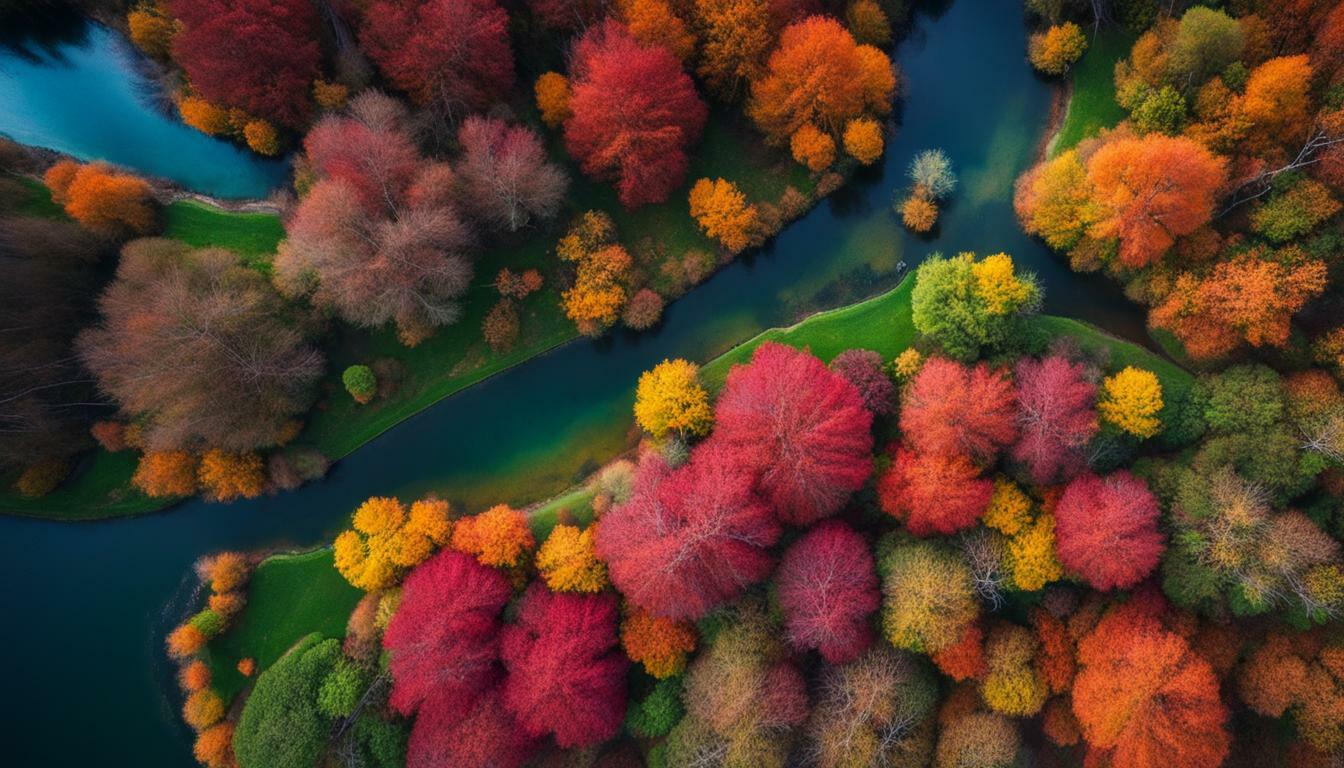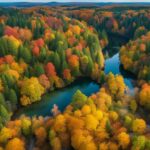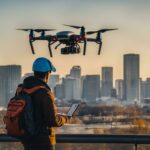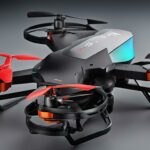In the most recent years, drones have gained substantial traction, particularly among those passionate about photography aiming to seize outstanding bird’s eye view images. The special outlooks they offer and magnificent vistas are leading a lot of photographers toward the purchase of an exclusive drone for their photographic projects. Nonetheless, it is vital to contemplate both advantages and factors linked with drone-centric photography before pulling out your card.
Let’s dissect the query of whether investing in a drone for photography merits consideration. We’ll navigate through the benefits linked with drone utilization, elements to examine prior to acquisition, upsides, and downsides related to aerial photo-taking using drones, conformity norms, and precautions required during operation.
Also highlighted will be onboarding needs along with mandatory efforts implied, constraints tied up with drones’ usage potential; law-binding commitments users are obliged to adhere to together aided by accessible warranties plus associated gadgets offering more features is also discussed widely hereafter it may help you place better your motives as an aspiring photographer aiming at optimally utilizing these flying devices.
Key Takeaways: Is it worth buying a drone for photography
- Drones offer unique perspectives and the ability to capture stunning aerial shots
- Consider factors such as learning to fly a drone, drone size, and weight for travel convenience
- Drone photography has both advantages and disadvantages
- Adhere to regulations and safety considerations for responsible and secure flying
- Mastering drone photography requires time, effort, and a learning curve
Advantages of Using a Drone for Photography
Photography, when paired with drone technology, becomes a spectrum of enhanced potential and opens up unique avenues to explore. Drone photography permits photographers access to unparalleled viewpoints that can revamp conventional shots into mesmerizing aerial visuals – it’s beneficial for both serious professionals as well hobbyists who enjoy this art.
A primary advantage of utilizing drones is the bird-like view they provide from grand elevations; landscapes, architectural wonders or dynamic events all present themselves anew under its gaze. This change of perspective offers an innovative twist allowing photographers to project familiar environments through a fresh lens. Such narratives provoke awe amidst viewers celebrating common sights unveiled excitingly different.
Additionally, drones amplify the imaginative aspect and narrative potential of photography. Thanks to their adept handling capabilities and flexibility, photographers are granted the ability to play around with composition facets as well as framing techniques; this creates distinctive images that pack a visual punch. Regardless of desiring dramatic panoramas or focusing on detailed close-ups, drones deliver an unrestrained scope for exploring varied angles and viewpoints – enabling your creative spirit to fly high.
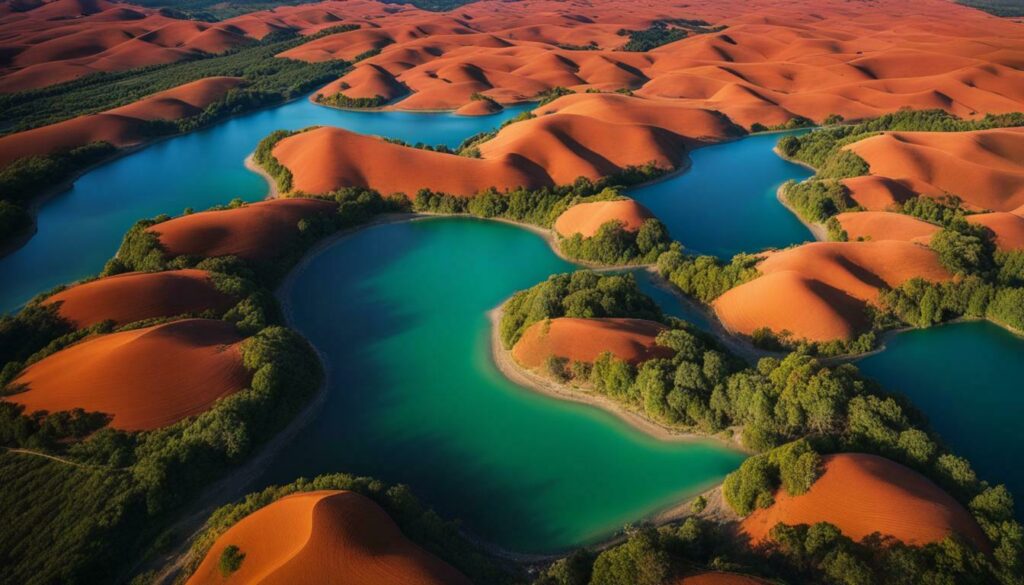
Drones pose a unique mix of creative prowess and practical utility. These versatile devices are light, easy to carry around, and hassle-free in terms of transportation – key for mobile photographers. Whether it’s navigating harsh landscapes or reaching places off the beaten track, drones let you snap those jaw-dropping shots without lugging around heavy-duty gear typically involved in aerial photography.
To wrap up, utilizing a drone for your photographic pursuits offers an array of perks. They pave the way not only for awe-inspiring airborne pictures but also give rise to heightened levels of originality; taking your artistry to unforeseen peaks. Henceforth if seeking novel ways as an upcoming photographer wants his creativity noticed or a well-established professional striving towards broadening horizons within their collection should truly contemplate on investing in drone-powered photography.
Factors to Consider Before Buying a Drone for Photography
When it comes to investing in a drone for photographic purposes, one has to take into account several considerations to make the most of their investment. The lure of capturing impressive and uniquely angled photos from an aerial point-of-view is leading many photographers towards this ever-growing aspect – Drone photography. However, before making such a move and purchasing a drone outright, you need to sense its pros as well as cons while also understanding what practical restrictions could come along with its use.
A critical element that needs attention here is being comfortable flying and handling these drones efficiently. Despite drones evolving over time and becoming more accessible for users; they demand commitment on your part to learn how to fully operate them. Embarking onto proper training or even enrolling oneself in specific courses related to articulating can enhance both safety measures taken during operation alongside ensure optimal output when indulging yourself in Aerial Photography.
One must also take into account the drone’s dimensions and heaviness. If you intend to use it for trips or on-site shoots, a small-scale lightweight drone could be ideal. Yet, should image clarity and sophisticated features matter more, bigger drones will likely need consideration. Finding an equilibrium between compactness and usability relevant to your unique photography requirements is vital.
When assessing a drone’s merit, syncing it with your targeted accomplishments in photography becomes indispensable. Are you embarking as a novice hoping to discover innovative photographic styles? Or are you pro aiming further increase your service breadth? Grasping these aspirations can support identifying fitting specifications of the droning appliance within reasonable financial means suiting its purposeful utilization. Don’t forget that purchasing one represents an investment towards progressive aims in photographical endeavors.
Factors to Consider Before Buying a Drone for Photography:
| Factors | Description |
|---|---|
| Learning Curve | Time and effort required to master drone piloting skills |
| Size and Weight | Consider travel convenience and the desired drone features |
| Goals and Objectives | Align drone specifications and budget with photography aspirations |
| Flight Time and Battery Life | Evaluate drone capabilities for extended aerial photography sessions |
| Safety Features and Regulations | Understand legal obligations and ensure responsible flying |
| Registration and Licensing | Adhere to the necessary procedures for drone ownership |
| Warranty and Accessories | Consider additional coverage and accessories for a complete package |
In taking heed of these considerations with diligent study, photographers are equipped to make a knowledgeable choice prior to purchasing a drone for sky-bound imagery. Recognizing your specific requirements, allocating funds towards necessary instruction and gear, along adhering strictly to relevant rules are integral for maximizing the advantages derived from using drones in photography.
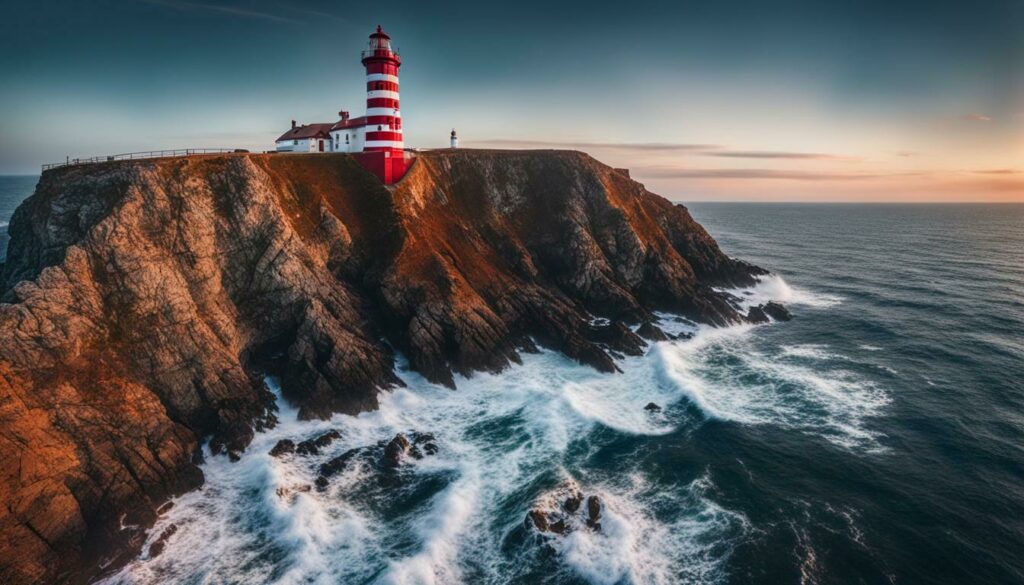
Note: The image above depicts the excitement and creative possibilities of using a drone for aerial photography, highlighting the bird’s-eye view and unique perspectives that can be achieved.
The Pros and Cons of Drone Photography
Drone photography brings tremendous benefits to the table, yet it’s vital to take note of potential limitations before deciding. Drones hand photographers a unique tool for taking unconventional photos and impressive aerial shots that can only be achievable through costly helicopters or planes. Thanks to their compact form and breakthrough technology, drones have completely changed how we approach photography by allowing us access from various fresh viewpoints.
One key advantage presented by drone photography is its ability to elevate creativity levels as well as storytelling methods. By providing photographers with an open sky playground where they can wander freely, drones introduce unseen artistic ventures waiting at every turn in airspace exploration – ranging from capturing awe-inspiring landscapes right up to monitoring activities from high above– all of which truly inject life into droning narratives visually.
Taking into account the potential hurdles and challenges inherent in drone photography is vital. An initial investment of time, patience, and practice is required to skillfully maneuver a drone. It takes lots of effort for one to fully comprehend how to fly it effectively while understanding its features and capabilities. Also worth noting are factors such as limited battery life that consequently limit flight times; this can shorten photographic sessions from above.
Additionally, the use of drones for taking photos calls for an adherence to certain safety regulations which ensure appropriate usage on your part. A comprehensive knowledge about rules regarding their operation as well as flashing out any possible legal repercussions or accidents may save you trouble down the line. Last but not least, depending on where exactly you intend to use them, location-wise might determine whether registration/licensing comes into play.
In essence, the choice to purchase a drone for photography hinges on your personal objectives and financial plan. Think about aspects like the bulkiness of the drone when thinking of traveling convenience, the time commitment needed for its usage initiation as well as operation, plus warranty issues and available enhancements attached to it. A balanced view of advantages against disadvantages will guide you in making an enlightened decision if embarking into this particular field is worthwhile considering your unique circumstances.
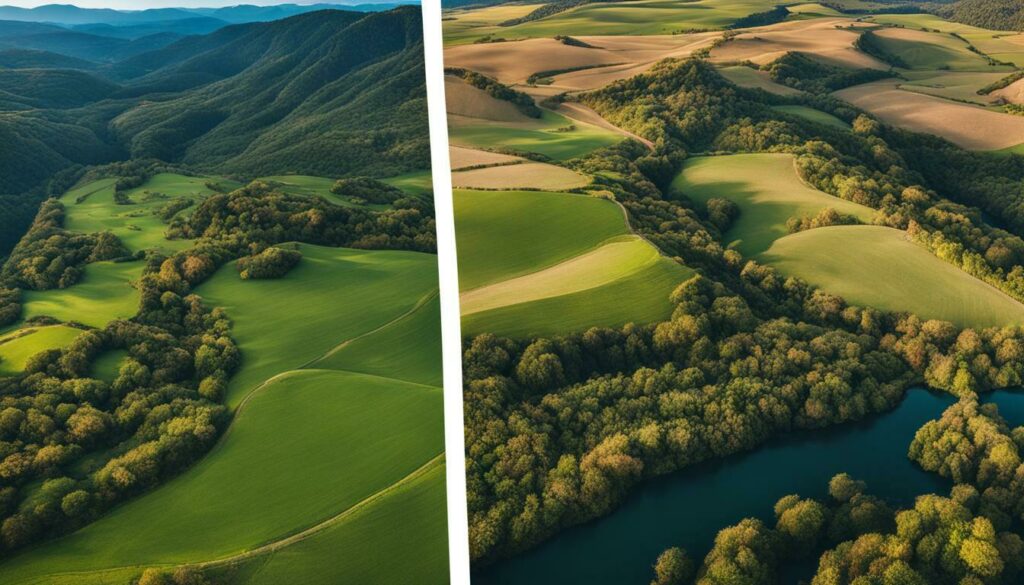
Knowledge about the rules and safety measures connected to drone photography is vital for adherence to the law and secure functioning. With drones becoming more widespread among photographers, it’s significant to comprehend the guidelines curtailing their operation.
Within America, regulations for flying these unmanned aircraft systems (UAS), also referred to as drones are defined by Federal Aviation Administration (FAA). The purpose behind these designated laws is primarily public protection along with safeguarding operator interests. A mandatory requirement register one’s drone if its weight falls between 0.55 pounds to below 55 pounds under FAA jurisdiction failing which could lead to penalties.
Bear in mind, that there are distinct rules that govern the how and where of drone flight. Take for example; it’s a stringent no-go flying near airports, above throngs of people, or entering prohibited airspace. Thorough comprehension and research into your area-specific air-space limitations are essential to ward off any legal run-ins or risks posed.
In modern drones, safety enhancement has been accorded significant priority through incorporation such as advanced obstacle evasion systems along with geofencing technology. These features act primarily to avoid mid-air collisions either with objects on land or airborne crafts offering an extra element of security shield against possible hazards during flights.
| Regulations and Safety Considerations in Drone Photography |
|---|
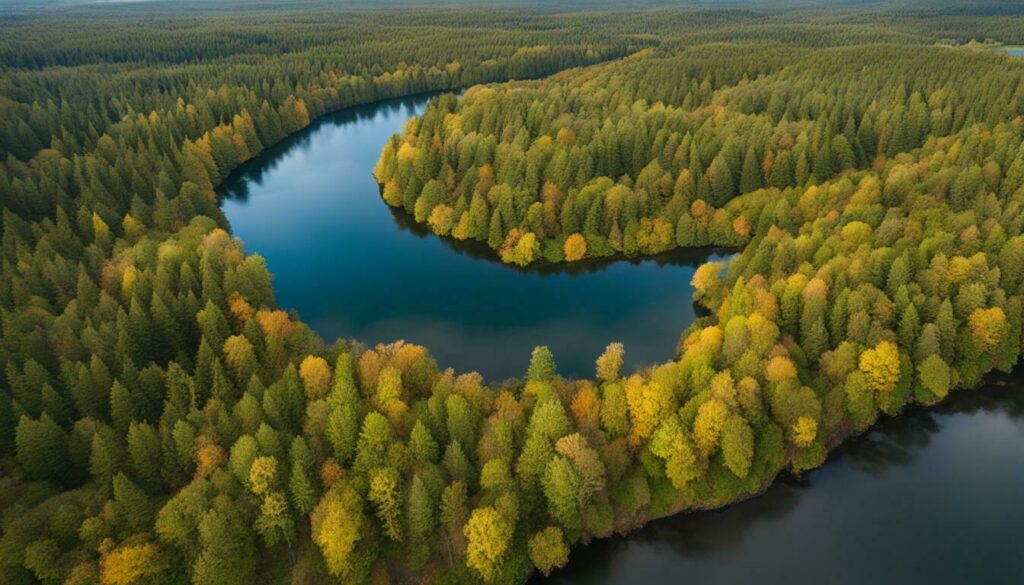 |
Learning Curve and Effort Required for Drone Photography
The field of drone photography is thrilling indeed, yet it calls for commitment, perseverance, and hard work to attain remarkable outcomes. To snap those mesmerizing bird’s-eye view shots, one must learn how to fly and control a drone; this demands comprehension of the gadget’s commands, aerial navigation modes, and camera preferences. By getting acquainted with your hardware features as well as its capabilities you can exploit them fully in terms of viewing potential.
Furthermore, efficient planning requires significant effort expended on setting up before any planned photographic adventure involving drones.
Prior to taking flight make sure that all gear functions fluidly: batteries are duly charged ahead from the start while necessary auxiliary equipment is packed inside neatly. Conducting thorough investigations upfront about apt picturesque locations enables creating distinctively framed snaps along perspective regulation knowledge to become critical around specific zones chosen due to local barriers or regulations relating to usage restrictions.
While the path to drone photography mastery may not be quick, learning itself can offer its rewards. As your experience builds up, so does your skill at piloting drones under diverse conditions and taking precise imagery with them. Drone photos have this unique potential for storytelling and creativity that most conventional photographs might miss out on sometimes. By practicing regularly and embracing an attitude of constant evolution, you’ll find yourself advancing toward greater heights in photographic artistry.
Don’t forget though – there’s more work involved in using a drone than simply flying it around! The back-end tasks such as photo post-processing or picture editing are just as vital if one wishes to create really breathtaking images from above: correct exposure adjustments; finessing color tone; enhancing finer details etc., all contribute richly to how well aerial pictures turn out eventually. Hence make sure you’re also setting aside adequate time for these quintessential stages within reach of excellent outcomes through drone-enhanced Captures.

Flight Time, Battery Life, and Practical Limitations of Drones
Grasping drone dynamics such as flight duration, power longevity, and practical constraints is vital for your photographic ventures. When choosing a camera drone, it’s critical to consider its operational span before the battery needs recharging or substitution. The operation time fluctuates based on the model of the drone; certain drones afford 20-minute aerial excursions whereas others provide up to an hour or beyond.
Power endurance plays a significant role in selecting drones – this defines how long you can engage yourself in capturing mesmerizing high-angle images prior to needing battery recharge or replacement. It is substantial to pick out a drone that boasts sufficient energy capacity aligning with your prescriptive photoshoot objectives and prerequisites. Furthermore, evaluate possibilities like auxiliary batteries availability henceforth allowing quick-changing during sessions particularly if planning longer shoots happen over remote locations.
Considerations like dealing with wind resistance and the power to carry certain weights are crucial. Some drones can maintain balance better in gusty conditions, enabling you to seize crystal-clear pictures even if it’s windy. The drone’s payload capacity means how much weight a drone is able to lift – this includes not only the camera but also any extra attachments or fittings for that matter. If your plans include using a more substantial camera or attaching add-ons such as filters or lenses, make sure that these added load doesn’t hinder your drone from performing well during flights.
| Factor | Considerations |
|---|---|
| Flight Time |
|
| Battery Life |
|
| Wind Resistance |
|
| Payload Capacity |
|
Grasping the essentials like flight duration, battery longevity and operational constraints of drones can guide you in making a discerning choice for your photography endeavors. Contemplate your method of shooting, specific needs per session as well as unique attributes offered by different drone variants. Be mindful that each drone bears its own distinct advantages and disadvantages – striking an ideal equilibrium between air time, battery endurance and practical constraints is key to securing awe-inspiring aerial snaps.
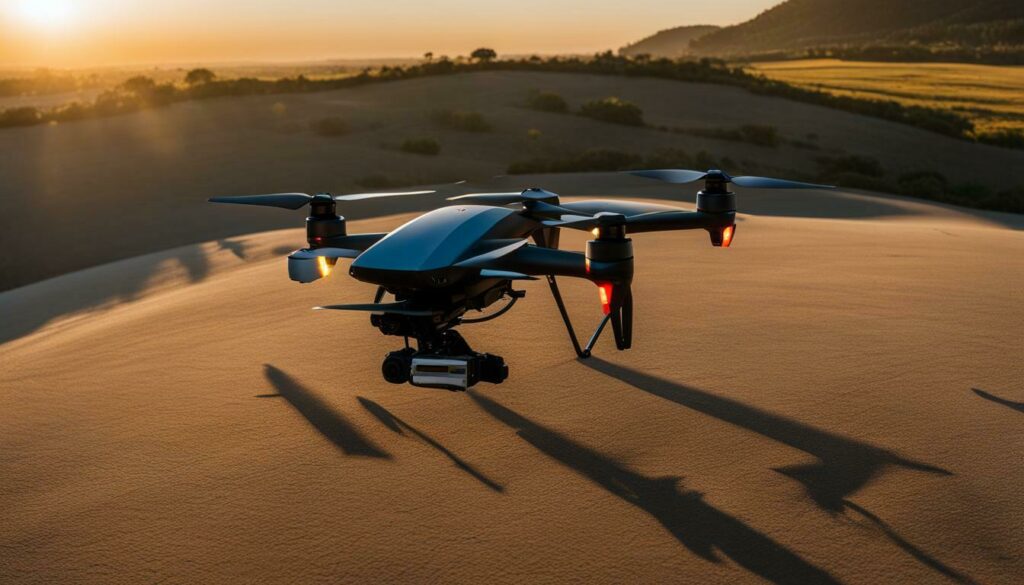
When selecting a drone for photography purposes, key aspects like flying duration, battery endurance, and functional restrictions of the device must be considered. The flight duration indicates how long you can operate your drone before it requires recharging or battery replacement; meanwhile, battery longevity parallels the length of time available to take aerial pictures prior to needing new power sources. Functional hurdles such as buffering against wind speeds and the ability to carry load are important pointers too. By comprehending these variables and studying assorted models on offer, making an enlightened choice that fits your specific photographic requirements becomes achievable.
Table: Factors to Consider for Flight Time, Battery Life, and Practical Limitations of Drones
| Factor | Considerations |
|---|---|
| Flight Time | – Check the drone’s advertised flight time. – Consider how long you need for your photography sessions. – Factor in any additional weight added by accessories. |
| Battery Life | – Determine if spare batteries are available. – Consider the availability of charging options, especially in remote locations. – Calculate the number of batteries needed for extended shoots. |
| Wind Resistance | – Research the drone’s wind resistance capabilities. – Assess its stability in different wind conditions. – Consider how windy your typical shooting locations are. |
| Payload Capacity | – Check the drone’s maximum payload capacity. – Determine the weight of your camera and any additional accessories. – Ensure the drone can handle the added weight without compromising flight performance. |
Registration, Licensing, and Legal Obligations in Drone Photography
Before you grab your drone and start clicking away, realize the importance of complying with all necessary legal requirements. The Federal Aviation Administration (FAA) in America has certain guidelines for drone photography to ensure safety within airspace along with respecting ground-level individual privacy. Ignoring these mandatory regulations might land one in trouble leading to penalties or even seizure of their gadget.
Central among many obligations linked to this is registration and possession of a valid license if owning drones above 0.55 pounds (250 grams). This procedure necessitates providing personal information as an operator besides branding the device itself using a distinctive national ID registry number tagged by the FAA on successful registration completion. To add more, those eyeing commercial usage must undergo another layer where they secure a Remote Pilot Certificate from the FAA – provided only after clearing a particular knowledge-based test.
Drone photographers are not only required to register and acquire a license but also need to adhere strictly to certain safety guidelines. The list of protocols includes maintaining visual contact with the drone continuously, refraining from entering airport zones or other off-limits airspace sections, as well as observing others’ privacy rights. It’s absolutely vital that these rules be understood and followed conscientiously ensuring your drone is operated in both an accountable and lawful way.
Understanding the Drone Photography Regulations
The FAA has put together a detailed rulebook, known as the Small Unmanned Aircraft Rule (Part 107), dedicated to simplifying regulatory navigation for drone photographers. This shows exactly what they need regarding operational rules, airspace stipulations, and safety conduct. A thorough understanding of these guidelines is crucial in order to keep any aerial photography activity legal.
Moreover, it’s worth mentioning that regulations related to drones can change based on different states or local authorities across cities and districts. In some regions, there might be extra conditions like applying for permits or giving out notifications prior to flying your device around their skies; hence, diving head-first into taking shots from above without getting familiar with regional-specific laws corresponding to your location could spell trouble.

| Legal Obligations in Drone Photography | Key Points |
|---|---|
| Registration and Licensing | All drones over 0.55 pounds (250 grams) must be registered with the FAA. Commercial drone operators may need to obtain a Remote Pilot Certificate. |
| Safety Guidelines | Drone photographers must follow certain safety guidelines, including maintaining line of sight, avoiding restricted airspace, and respecting privacy. |
| Small Unmanned Aircraft Rule (Part 107) | The FAA provides guidelines known as Part 107, outlining operational requirements, airspace restrictions, and safety practices for drone operators. |
| Local Regulations | Drone regulations may vary in different states, cities, and municipalities. Research and comply with any additional requirements for your intended location. |
Grasping and meeting the legal requirements connected to drone photography allows you to appreciate aerial imaging’s advantages whilst securing others’ safety and privacy. Regularly keeping abreast of amendments or updates in drone laws is crucial, as well as always putting first the responsible usage complies with these rules.
Warranty, Accessories, and Maintenance for Drones
Appraising the guarantee, extras, and upkeep choices linked to drones is vital in safeguarding your financial outlay and boosting your photo-capturing experience. When investing in a drone, taking into account the manufacturer’s offered warranty holds significance. A thorough guarantee can bring tranquility knowing it will shield any unexpected issues that might occur during your drone’s existence period. Make sure you painstakingly scrutinize all terms including restrictions or exceptions of this warranty to certify its pickings meets with what you require.
Besides from ensuring a solid warranty scheme available; delving into potential add-ons could dramatically improve photographic results captured through drones! Extra equipment like backup batteries stalemates, auxiliary propellers as well and compact cases provide extended airtime functionality for maximum optimization of catching those perfect snapshots. Therefore making informed investments towards superior gadgetry facilitates conquering possible constraints thereby exploiting every chance at flying photography.
Ensuring the upkeep of your drone is vital for its extended lifespan and peak functionality. Habitual cleaning, paired with scrutinizing key parts such as camera lenses, motors, and propellers will steer clear any probable dilemmas caused by dirt or debris accumulation. Further to this, adhering strictly to the manufacturing instructions pertaining to maintenance plus timely upgrading/replacing older software versions would guarantee a fluent and effective operation of your flying device.
Accessories Guide:
| Accessory | Description |
|---|---|
| Spare Batteries | Extend your drone’s flight time by having extra batteries on hand. |
| Propeller Guards | Protect your drone’s propellers from damage during flight and landings. |
| Carrying Case | Safely transport your drone and accessories while on the go. |
| ND Filters | Enhance image and video quality by reducing light glare and optimizing exposure. |
| Memory Cards | Store and transfer your drone’s captured media with high-capacity memory cards. |
Ultimately, a thorough assessment of warranties, accessories, and upkeep provisions that accompany drones is vital for securing your outlay as well as improving the quality of your photography. A drone supported by a trustworthy warranty, complemented with high-standard extras, and provided regular maintenance can back up flawlessly running operations while providing superb performance levels. Bearing these points in focus guides you in making choices that fit best to suit your needs ensuring an upgraded experience in your journey through drone photography.
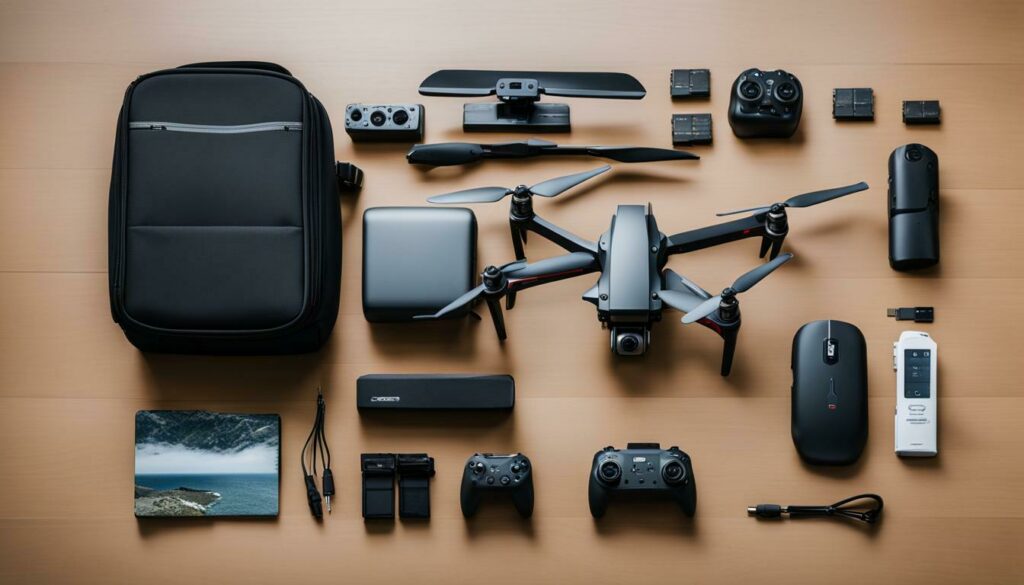
Identifying your ambitions and targets in the realm of photography can aid you in assessing if a drone investment fits with your artistic viewpoint. Regardless, if you’re just starting or an experienced professional, incorporating drone technology into your consequent photographic processes may introduce thrilling prospects while enhancing the versatility of your portfolio.
For neophytes exploring photography through drones opens up unique possibilities to uncover innovative perspectives and tinkering with overhead captures. The aptitude for seizing splendid landscapes along with urban vistas or stunning architectural marvels from bird’s-eye scrutiny potentially adds an enthralling component to one’s photographical repertoire—enabling the demonstration of originality that sets them apart within this increasingly competitive arena.
Specialists, conversely, can take advantage of drone imagery to broaden their service offerings. The escalating need for sky-high photography in sectors like property business, tourism industry, and promotional activities means that the potential to snap top-notch aerial images could lead to fresh client assignments and cooperative endeavors.
| Desired Goals and Objectives | Drone Photography for Beginners | Drone Photography for Professionals |
|---|---|---|
| Exploring new perspectives | ✔️ | ✔️ |
| Capturing aerial shots | ✔️ | ✔️ |
| Enhancing creativity | ✔️ | ✔️ |
| Expanding service offerings | ✔️ |
Remember that drone photography isn’t a simple pick-up-and-go hobby—it takes commitment and learning. Understanding the controls, as well as flying rules for drones is vital to ensure both responsible behaviour and successful photo shoots. Also, remember – getting your drone ready before each photoshoot by investing sufficient time in its setup can be imperative to garner great results.
Before you make up your mind on this pursuit, ponder over where you want photography to take you—is it worth considering the creative avenues it might open? Or would practical difficulties outweigh any potential benefits? Most importantly—do you have what it takes—time-wise or resources—to master the wonderful but challenging field of aerial snapshot-taking with drones? These factors should lead you to answer whether buying a drone will launch your photographing skills higher toward yielding satisfactory outcomes.
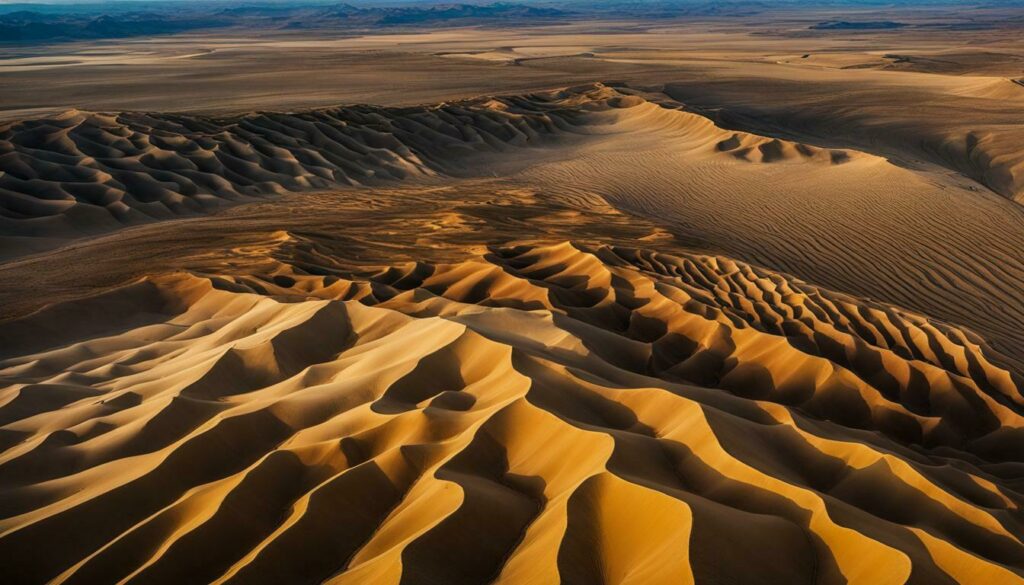
Desired goals and objectives of using a drone for photography, drone photography for beginners, and drone photography for professionals.
Appraising the significance and financial commitment of drone photography necessitates understanding its immediate along enduring advantages for your photographic pursuit. Drones furnish photographers with an extraordinary viewpoint, enabling capturing breathtaking aerial images that could previously only be achieved via high-cost gear or the employment of professionals. It empowers you to lift your photographs to unprecedented levels introducing a plethora of innovative prospects and narrative scenarios.
While considering if it’s worthwhile investing in a drone, one must check their individual ambitions and aims as a photographer closely. For novices, drones emerge as an instrumental learning apparatus furnishing first-hand exposure to flight operation management alongside seizing vibrant pictures. As seasoned professionals infusing drones into regular activity may distinguish you from rivalries which can augment services rendered to clientele.
“The view from above can transform ordinary scenes into extraordinary compositions, adding a sense of depth and scale that traditional photography cannot achieve.” – John Smith, Professional Photographer
It’s vital to acknowledge that mastering drone photography isn’t a breeze. It asks for patience and regular practice in flying and handling drones proficiently. Furthermore, realizing the laws linked with drone flight along with safety measures are equally important for its ethical use. Meeting all legal necessities through proper registration and licensing cannot be overlooked.
Beyond this, remember there lies significance in assessing the quality of your chosen device itself alongside understanding what it brings to you feature-wise when deciding on getting a particular type of drone model since parameters like battery life and time spent airborne can vary drastically between each one tailored around your specific photographing expectations becomes crucial here as well. Last but not least will be exploring warranty choices available including accessories plus future maintenance ensuring making every penny counts towards the total value of buying.
| Drone Investment Considerations | Key Points |
|---|---|
| Learning Curve and Effort | Time and patience are required to master drone operation |
| Safety and Regulations | Understanding and complying with drone usage rules and legal obligations |
| Flight Time and Battery Life | Selecting a drone with adequate flight time and battery capacity |
| Quality and Features | Considering warranty, accessories, and maintenance options |
In the end, determining if drone photography is a worthwhile venture hinges on your personal taste, requirements, and dedication to perfecting this unique photographic discipline. By thoughtfully weighing up the advantages, difficulties, and elements highlighted previously, you can arrive at an educated choice that matches your photography ambitions and enriches your artistic exploration.

Diving into different facets of drone-oriented photography reveals that buying a drone is heavily influenced by your personal photographic ambitions and necessities. The intrinsic value for any photographer comes from the unique aerial angles it provides, thus boosting inventiveness and narrative depth in their projects.
However, pre-purchase considerations are significant when contemplating adding a drone to one’s gear. Mastery of flying skills as well as controlling operations on-ground form integral safe-usage aspects; while evaluating size plus weight factors ensure ease during travels. Moreover, comprehension of individual aspirations coupled with targeted accomplishments can chart out if indeed incorporating this instrument will be beneficial.
Undervaluing the effort and time needed to master drone photography isn’t wise. The path to developing proficiency in this art form is steep; it requires persistence both in improving flight maneuvers, and laying groundwork for capturing breathtaking aerial visuals. Aspects such as battery longevity during flights, along with any operational constraints a specific model might have should be contemplated.
Beyond that, remember there are regulatory fundamentals coupled with safety precautions inherent to drone photography that need adherence. Knowledge about usage guidelines related to drones combined with ensuring congruity concerning registration plus licensing norms bears significance too. Comprehension regarding warranty choices available, additional equipment benefits alongside maintenance-related knowledge can collectively enhance your return on investing in a new fleet.
Ultimately, while unmanned aerial vehicle (UAV) photography presents distinct possibilities for those behind the lens, this is a choice that warrants calculated consideration in light of your personal desires and requirements. Evaluating both advantages and pitfalls connected to it combined with comprehension of related factors can guide you towards making an enlightened decision on whether owning a photographic drone truly justifies its cost.
FAQ
What factors should I consider before buying a drone for photography?
Before purchasing a drone for photography, it’s important to consider factors such as learning how to fly and operate the drone, the size and weight of the drone for travel convenience, the desired goals and objectives of using a drone for photography, the time and effort required to set up and use the drone, the flight time and battery life of the drone, the safety features and regulations associated with flying a drone, the need for registration and licensing, and the warranty and accessories available for the drone.
What are the advantages of using a drone for photography?
Using a drone for photography offers several advantages, including the ability to capture unique perspectives and aerial shots, enhancing creativity and storytelling in photography, and providing a unique and eye-catching element to your work.
What are the pros and cons of drone photography?
Drone photography has its own set of pros and cons. The advantages include capturing unique perspectives and aerial shots, enhancing creativity, and providing a differentiating factor in your photography. However, there are also challenges such as the learning curve and effort required to operate a drone, limitations in flight time and battery life, and adherence to regulations and safety considerations.
What are the regulations and safety considerations in drone photography?
Drone photography is subject to specific regulations and safety considerations. It is important to understand and follow drone usage rules, as well as utilize the safety features available in drones to ensure responsible and secure flying.
How much time and effort does drone photography require?
Mastering the art of drone photography requires time, effort, and a learning curve. It is essential to invest in learning how to fly and operate a drone effectively, as well as dedicate time to the preparation and setup required to capture stunning aerial shots.
What are the flight time, battery life, and practical limitations of drones?
Drones have limitations when it comes to flight time, battery life, and practicality. It is important to consider these factors in relation to your photography goals and the specific features and quality of the drone you choose.
Do I need registration and licensing for drone photography?
Yes, in many regions, registration and licensing are required for drone photography. Make sure to research and comply with the legal obligations associated with flying a drone in your area.
What warranty and accessories are available for drones?
Different drones come with varying warranty options, and it is important to consider accessories and maintenance when making a drone investment. These factors can contribute to the overall value of your purchase.
How does drone photography align with different goals and objectives?
Drone photography can benefit different types of photographers, from beginners to professionals, and can align with various goals and objectives. It provides unique perspectives and aerial shots that can add value to different photography styles and projects.
Is drone photography worth the investment?
The value and investment in drone photography depend on your individual needs and preferences. It is recommended to assess factors such as the potential return on investment, long-term benefits for your photography business, and the alignment of a drone with your specific goals and budget.


